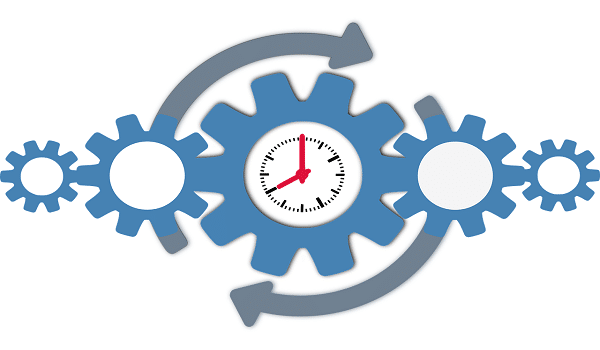Did you know that unplanned industrial machine downtime costs an average of $260,000 per hour? This reality strikes many manufacturers who see their productivity collapse due to unpredictable breakdowns. Indeed, the complex management of industrial machines represents one of the major challenges of modern industry today. However, real-time monitoring of industrial machines offers a revolutionary solution to anticipate, prevent, and optimize your equipment performance.
Thanks to Picomto, transform your approach to predictive maintenance and discover the considerable benefits: cost reduction, productivity improvement, and operational safety optimization.

Key Points to Remember About Real-time Industrial Machine Monitoring :
- Drastic cost reduction: Decrease in maintenance costs through predictive maintenance
- Productivity optimization: Performance increase through continuous monitoring
- Breakdown prevention: Early detection of anomalies before they cause downtime
- Improved decision-making: Real-time data for informed decisions
- Enhanced safety: Continuous monitoring to prevent incidents
1. What is Real-time Industrial Machine Monitoring?
Real-time industrial machine monitoring represents a continuous surveillance system that collects, analyzes, and instantly transmits performance data from your equipment.
This revolutionary approach allows manufacturers to maintain constant visibility over their machine status, thus transforming their traditional maintenance strategy into a predictive and proactive approach.
1.1. How Does Real-time Monitoring Work?
The operation relies on several interconnected stages:
- Data collection: Sensors integrated into machines gather information
- Instant transmission: Data sent via industrial communication protocols
- Automatic analysis: Algorithms continuously detect anomalies
- Proactive alerts: Immediate notifications in case of deviations
Furthermore, this monitoring allows identifying trends before they become problematic.
1.2. What Technologies Are Used?
Modern technologies transform industrial monitoring:
- Industrial IoT: Connected sensors for data collection
- Artificial intelligence: Predictive analysis of machine behaviors
- Cloud computing: Real-time data storage and processing
- Mobile interfaces: Access to information from anywhere
Notably, the integration of these technologies creates an intelligent monitoring ecosystem.
1.3. How Does Picomto Integrate into Real-time Monitoring?
Picomto revolutionizes real-time industrial machine monitoring through:
- Intuitive interface: Customizable dashboards for each user
- Native integration: Direct connection with your existing systems
- Digitized instructions: Real-time guided maintenance procedures
- Automatic reporting: Instant performance report generation
2. What Are the Benefits of Real-time Monitoring for Your Industry?
Real-time monitoring of industrial machines radically transforms the operational efficiency of manufacturing companies.
This innovative approach generates tangible benefits that directly impact the profitability and competitiveness of industrial organizations.
2.1. How to Improve Operational Efficiency?
Efficiency improvement operates through several levers:
- Downtime reduction: Prevention of unplanned breakdowns
- Cycle optimization: Automatic adjustment of machine parameters
- Yield improvement: Production capacity maximization
- Team synchronization: Optimal coordination between operators
However, the most significant impact concerns the transformation of daily work processes.
2.2. How to Optimize Maintenance with Picomto?
Picomto revolutionizes the maintenance approach through:
- Predictive maintenance: Planned interventions based on actual machine condition
- Interactive instructions: Step-by-step guidance for technicians
- Complete traceability: Detailed history of all interventions
- Integrated training: Continuous team skill development
Thus, this approach transforms corrective maintenance into intelligent preventive maintenance.
2.3. What Savings Can Be Achieved?
The generated savings are substantial:
- Maintenance costs: Expense reduction
- Energy consumption: 15 to 20% optimization
- Material waste: Reduction of production rejects
- Overall productivity: Measurable yield increase
2.4. How to Strengthen Operational Safety?
Safety improves considerably through:
- Early detection: Identification of dangerous situations
- Secure procedures: Safety instructions integrated into processes
- Continuous training: Permanent risk awareness
- Safety traceability: Incident tracking and corrective actions
3. How to Implement a Real-time Monitoring System?
Implementing a real-time industrial machine monitoring system requires a methodical and progressive approach.
This digital transformation impacts the entire organization and requires meticulous preparation to guarantee project success.

3.1. What Are the Key Implementation Steps?
Deployment follows a structured process:
- Initial audit: Assessment of existing conditions and objective definition
- Technical design: System architecture adapted to needs
- Progressive deployment: Implementation through pilot phases
- Team training: End-user support
- Continuous optimization: Adjustments based on user feedback
Nevertheless, each step must be validated before moving to the next.
3.2. What Challenges to Anticipate and How to Overcome Them?
The main challenges include:
- Resistance to change: Intensive communication and training
- Technical integration: Thorough testing before production implementation
- Investment budget: ROI demonstrated through pilot phases
- Internal skills: Personalized training and support
However, these obstacles become opportunities with the right strategy.
3.3. How Does Picomto Facilitate the Transition to Real-time Monitoring?
Picomto simplifies this transition through:
- Personalized support: Dedicated team for each project
- Intuitive interface: Rapid user adoption
- Flexible integration: Compatibility with existing systems
- Continuous support: Permanent technical and functional assistance
4. Picomto: The SaaS Solution for Digitalizing Your Industrial Operations
Picomto positions itself as the reference platform for real-time industrial machine monitoring. This SaaS solution transforms the traditional approach to industrial management by offering a unified and intelligent vision of your operations.
4.1. What Unique Features Does Picomto Offer?
Picomto provides revolutionary functionalities:
- Interactive dashboards: Real-time KPI visualization
- Augmented instructions: Augmented reality for maintenance
- Advanced analytics: Artificial intelligence for prediction
- Total mobility: Access from tablets and smartphones
Moreover, these functionalities adapt to the specificities of each industrial sector.
4.2. How Does Picomto Adapt to Different Industrial Sectors?
Picomto’s adaptability covers:
- Pharmaceutical industry: Strict regulatory compliance
- Food processing sector: Traceability and food safety
- Chemical industry: Risk management and safety
- Aerospace sector: Exceptional precision and quality
4.3. Why Choose Picomto for Real-time Monitoring?
Picomto’s decisive advantages:
- Recognized expertise: Prestigious references in industry
- Continuous innovation: Constant development of new functionalities
- French support: Local team for optimal support
- Rapid ROI: Return on investment demonstrated in 6 months
Conclusion
Real-time monitoring of industrial machines represents a major strategic lever for optimizing your production and reducing your operational costs.
Indeed, this approach transforms reactive maintenance into intelligent predictive maintenance, generates substantial savings, and significantly strengthens the safety of your operations.
Furthermore, Picomto establishes itself as the reference solution for effectively digitalizing your industrial processes. Thanks to its advanced functionalities and personalized support, this platform facilitates your digital transformation while maximizing your return on investment.
FAQ
What tool is often used to monitor production in real-time?
IoT tools, connected sensors, and platforms like Picomto are commonly used.
What is a machine monitoring system?
System collecting machine data to analyze performance and predict necessary maintenance.
What are industrial machines?
Production equipment, robots, conveyors, presses, lathes, milling machines in industry.
What is a machine condition report?
Document detailing performance, maintenance, and incidents to optimize equipment operation.
What are monitoring and evaluation tools?
KPIs, dashboards, IoT sensors, analysis software to measure performance.
What is the best time management tool?
Picomto offers real-time tracking, maintenance planning, and process optimization.
What are the three types of monitoring?
Preventive, predictive, and corrective monitoring for optimal equipment maintenance.






Leave A Comment